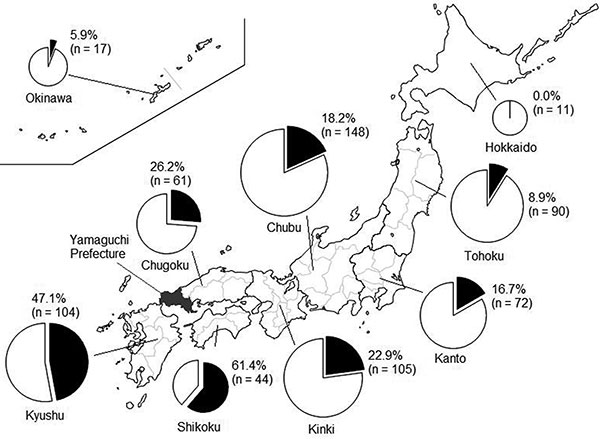Volume 16, Number 7—July 2010
Dispatch
Dogs as Sentinels for Human Infection with Japanese Encephalitis Virus
Figure

Figure. Seropositivity for Japanese encephalitis virus among dogs in 9 districts of Japan, 2006–2007. Numbers in parenthesis indicate number of dogs tested. The size of each circle indicates the number of samples. Black pie chart segments indicate the proportion of seropositive dogs; white segments indicate proportion of seronegative dogs.
Page created: March 02, 2011
Page updated: March 02, 2011
Page reviewed: March 02, 2011
The conclusions, findings, and opinions expressed by authors contributing to this journal do not necessarily reflect the official position of the U.S. Department of Health and Human Services, the Public Health Service, the Centers for Disease Control and Prevention, or the authors' affiliated institutions. Use of trade names is for identification only and does not imply endorsement by any of the groups named above.